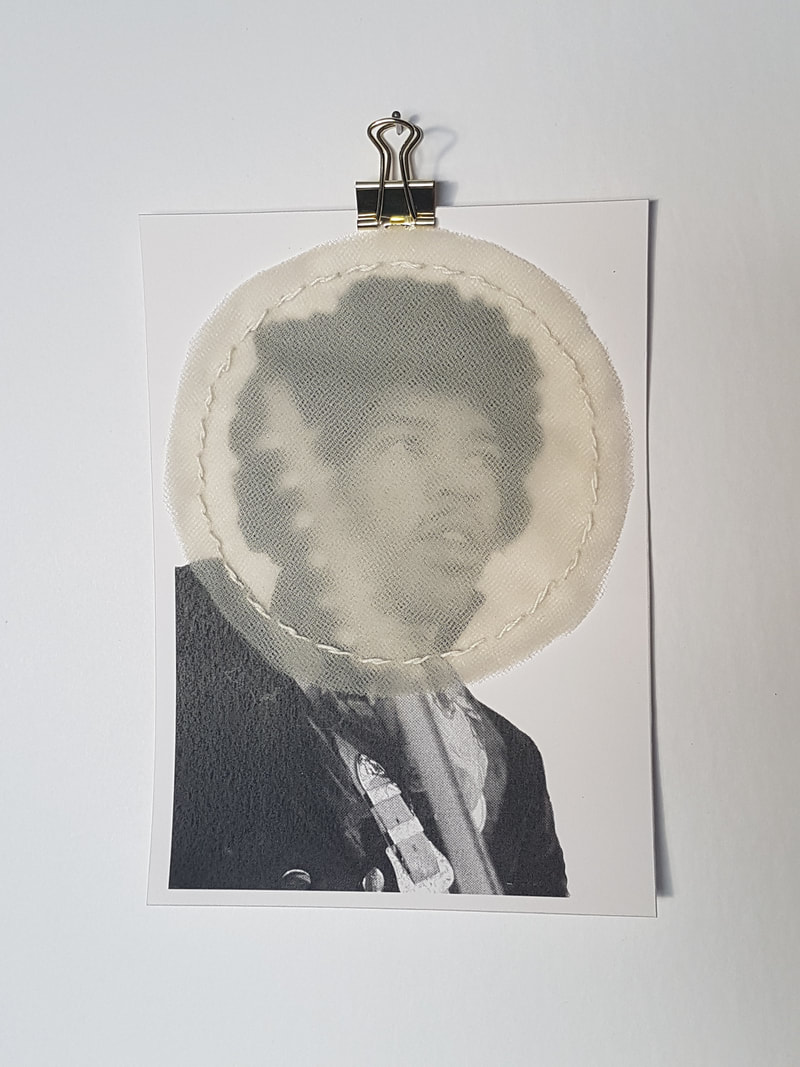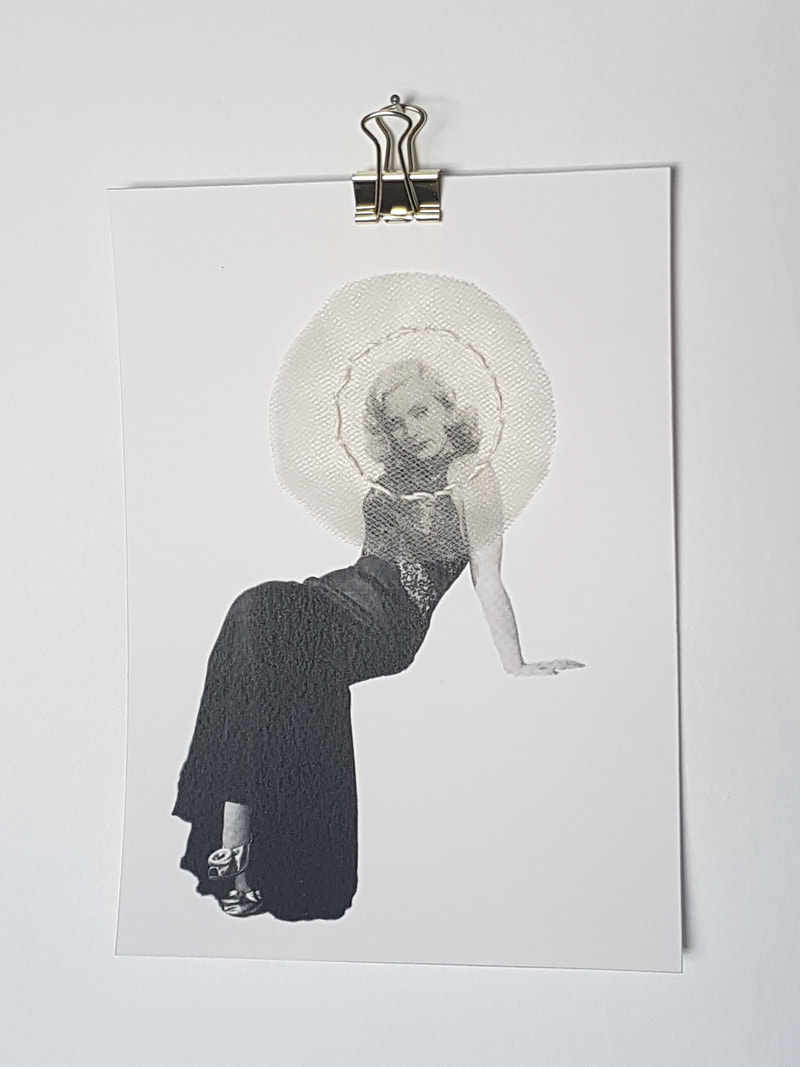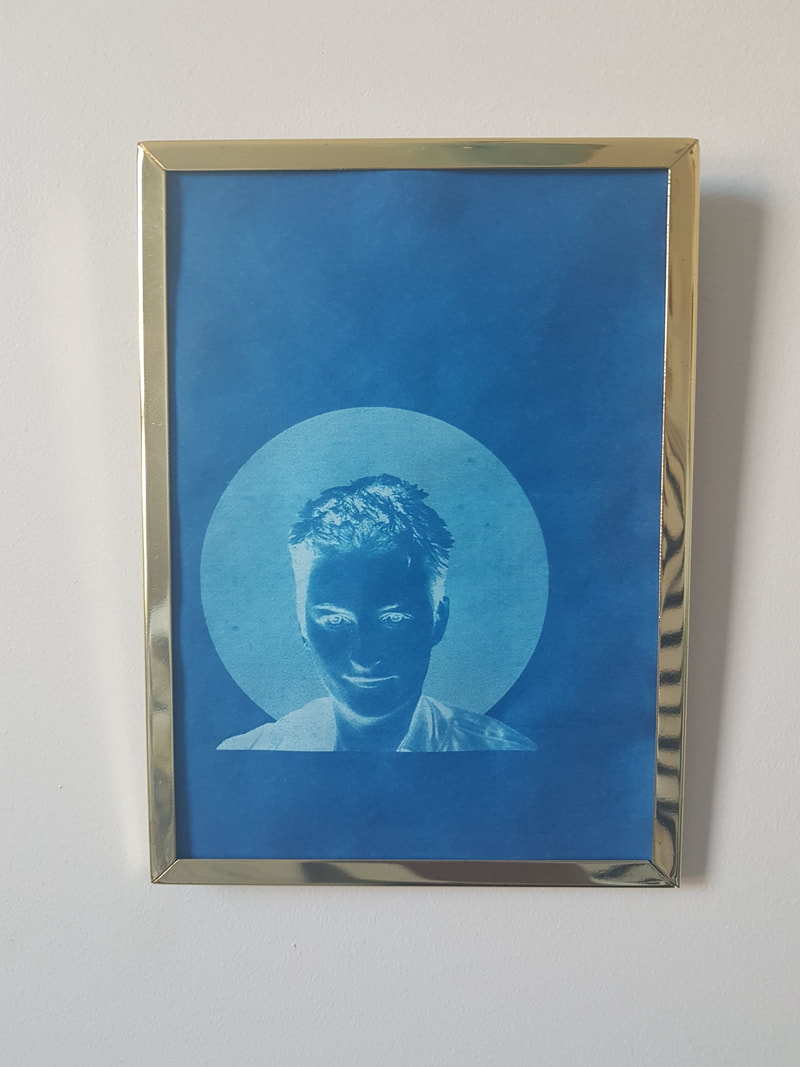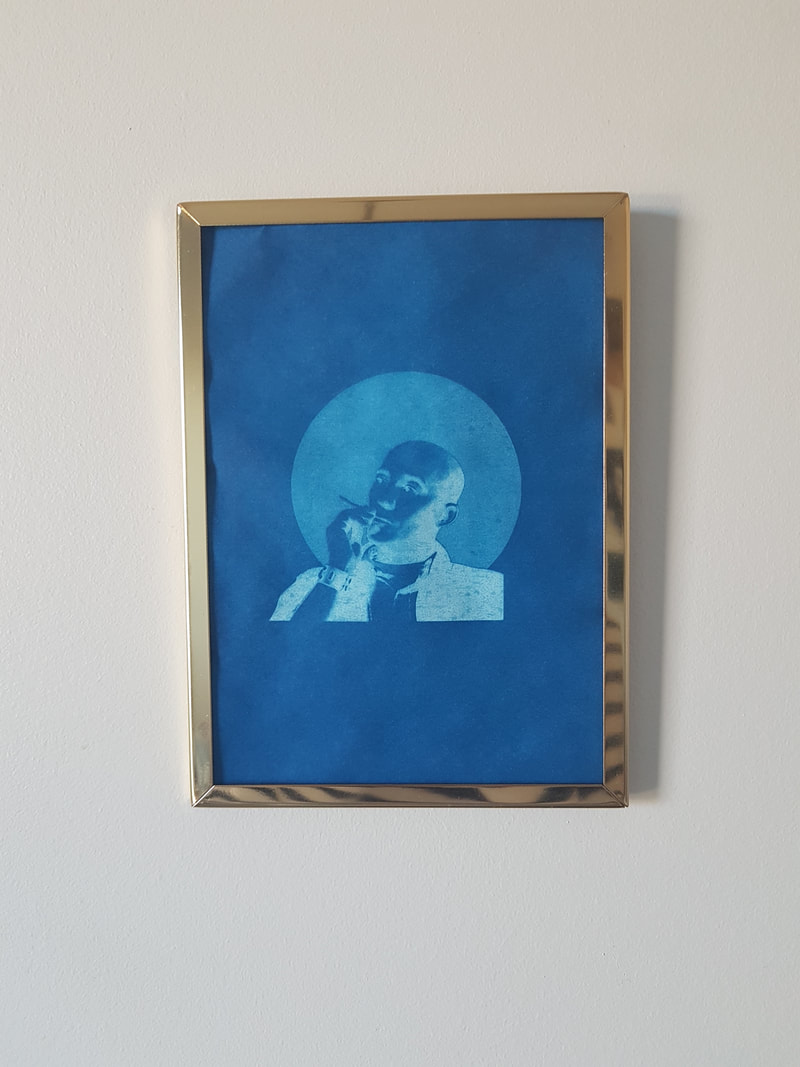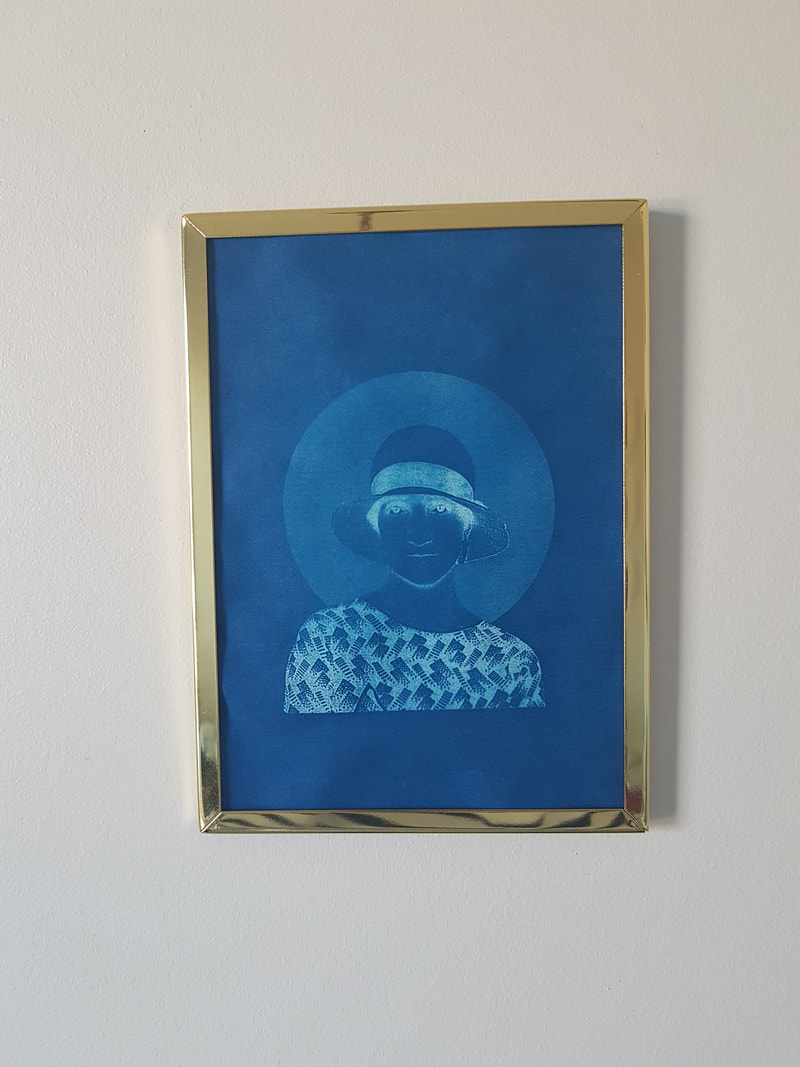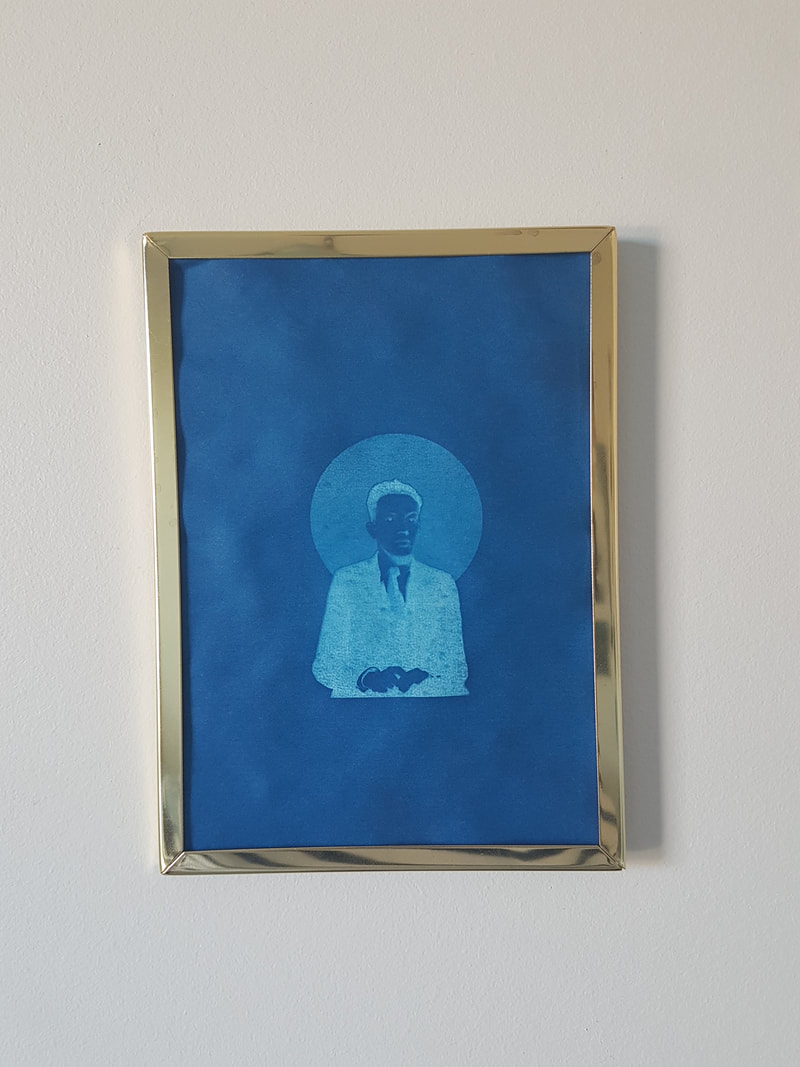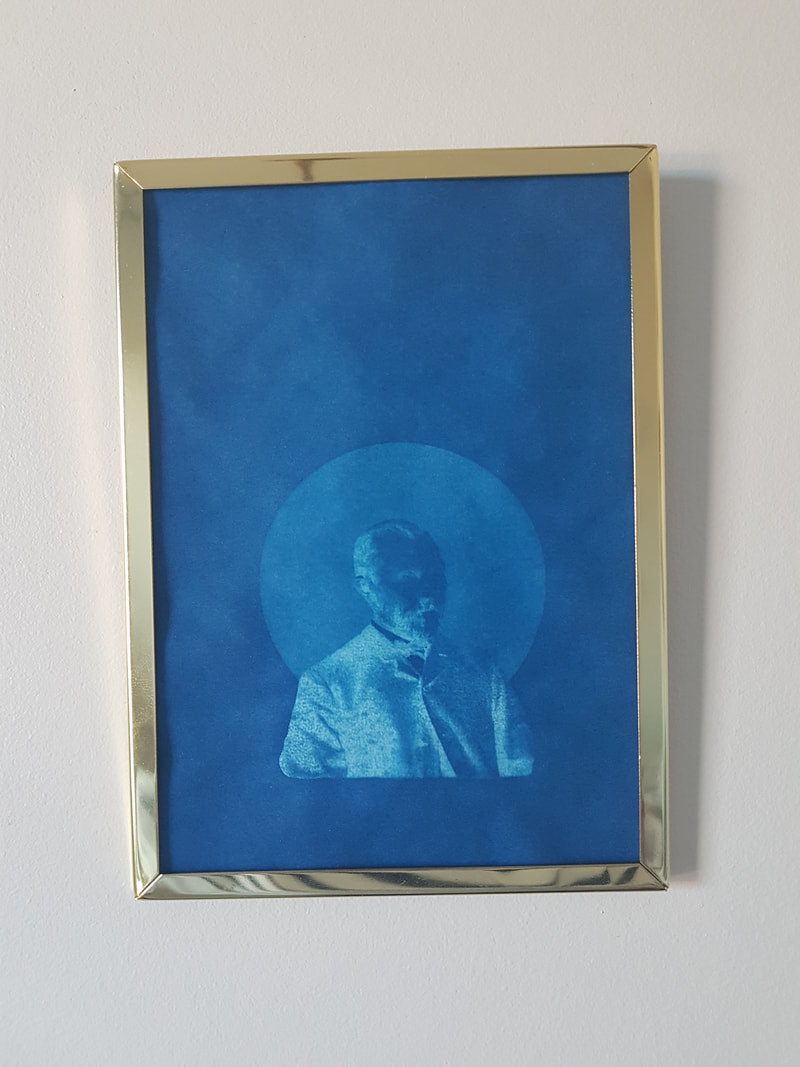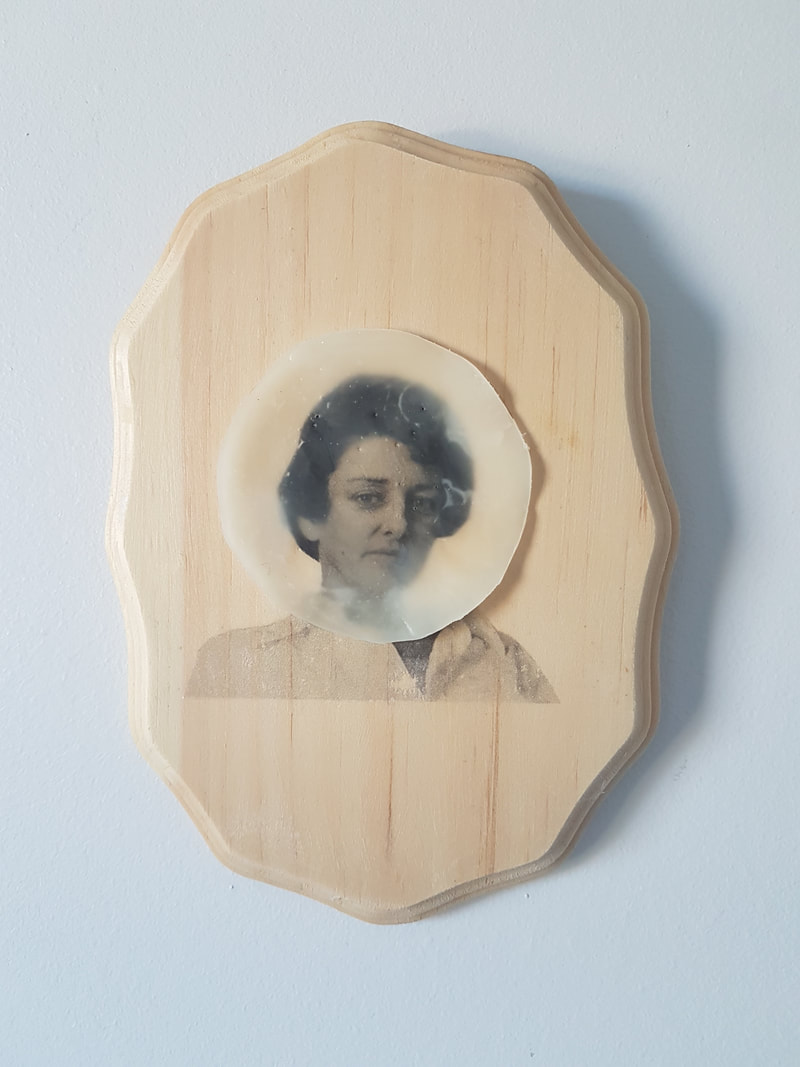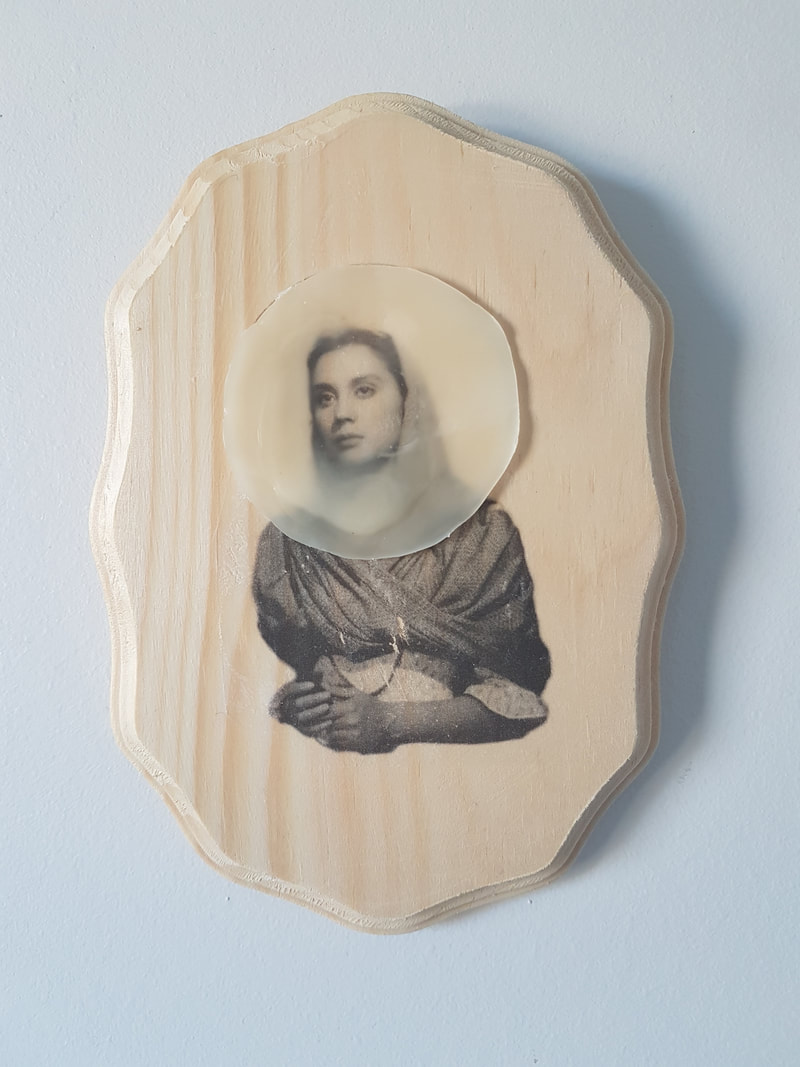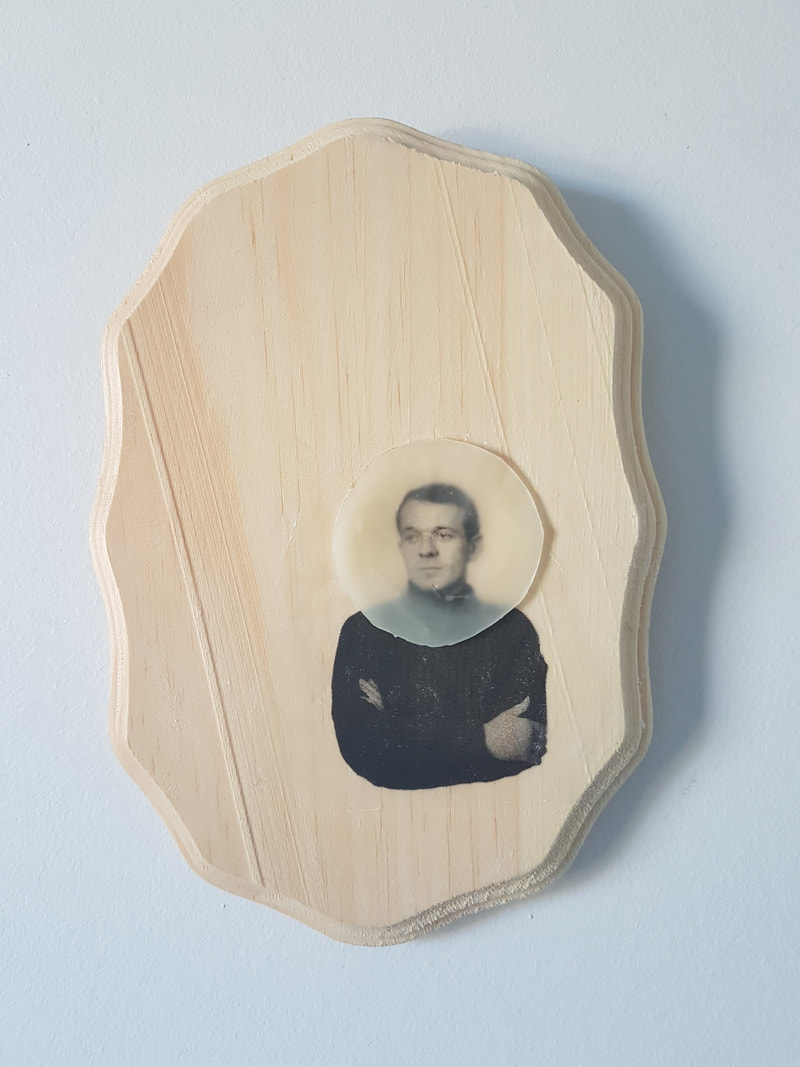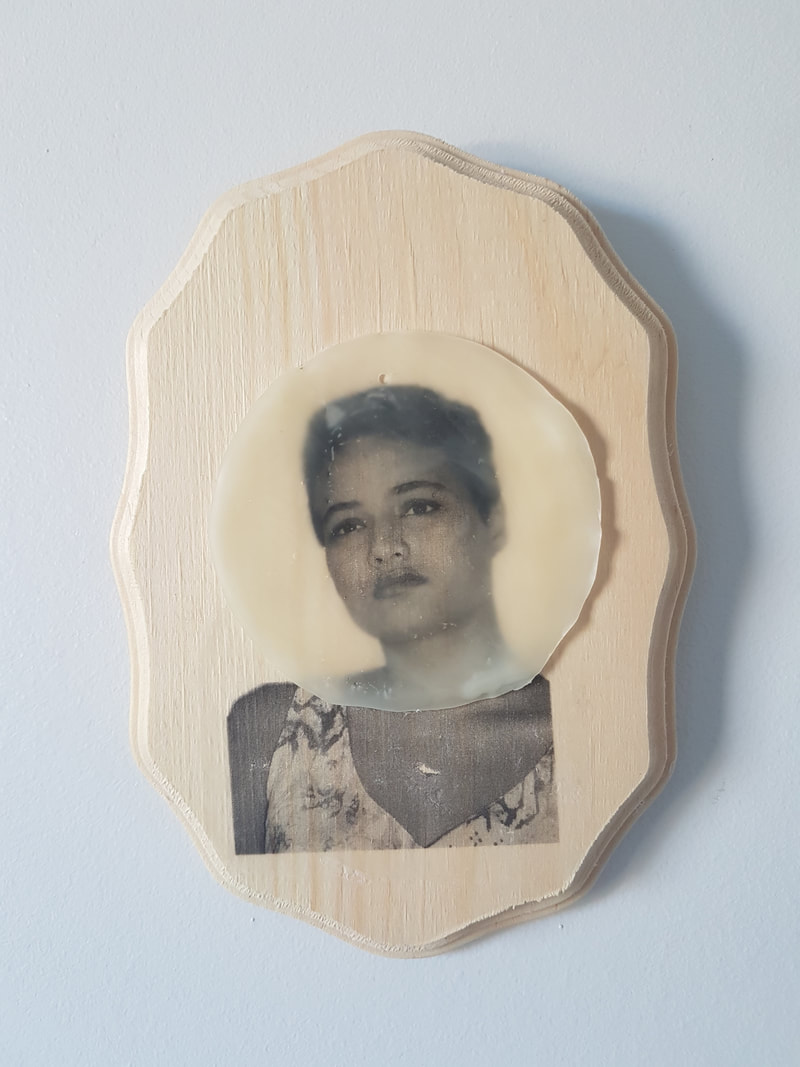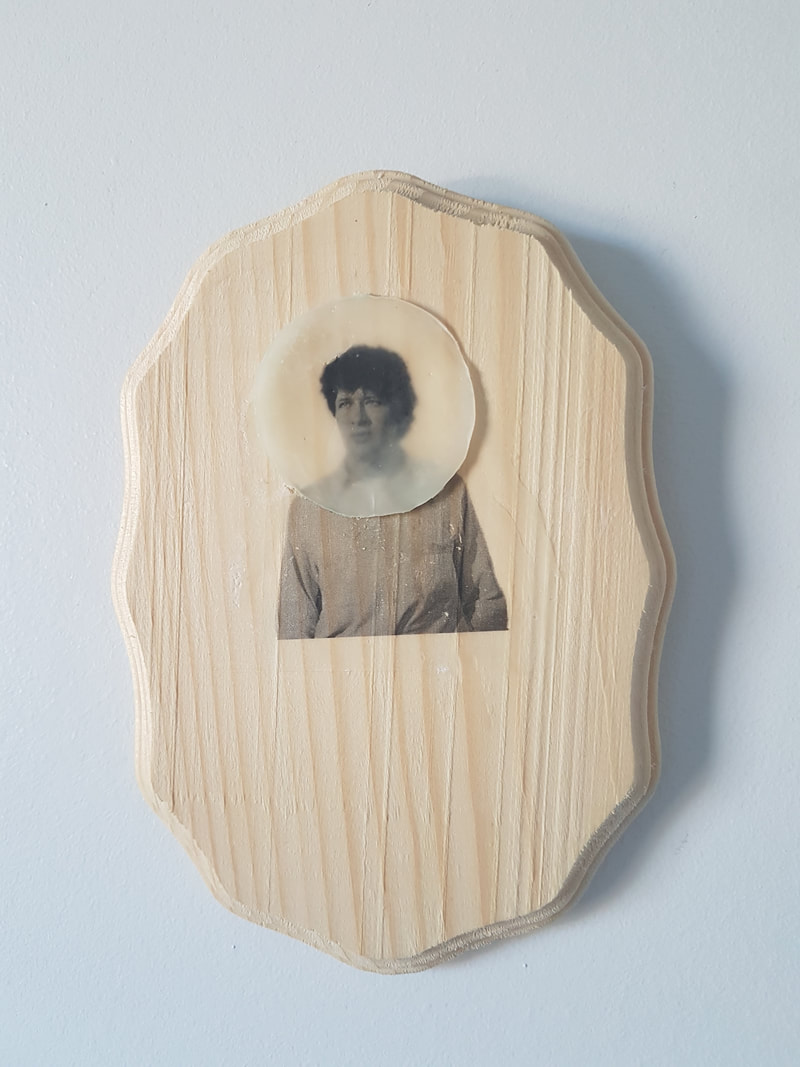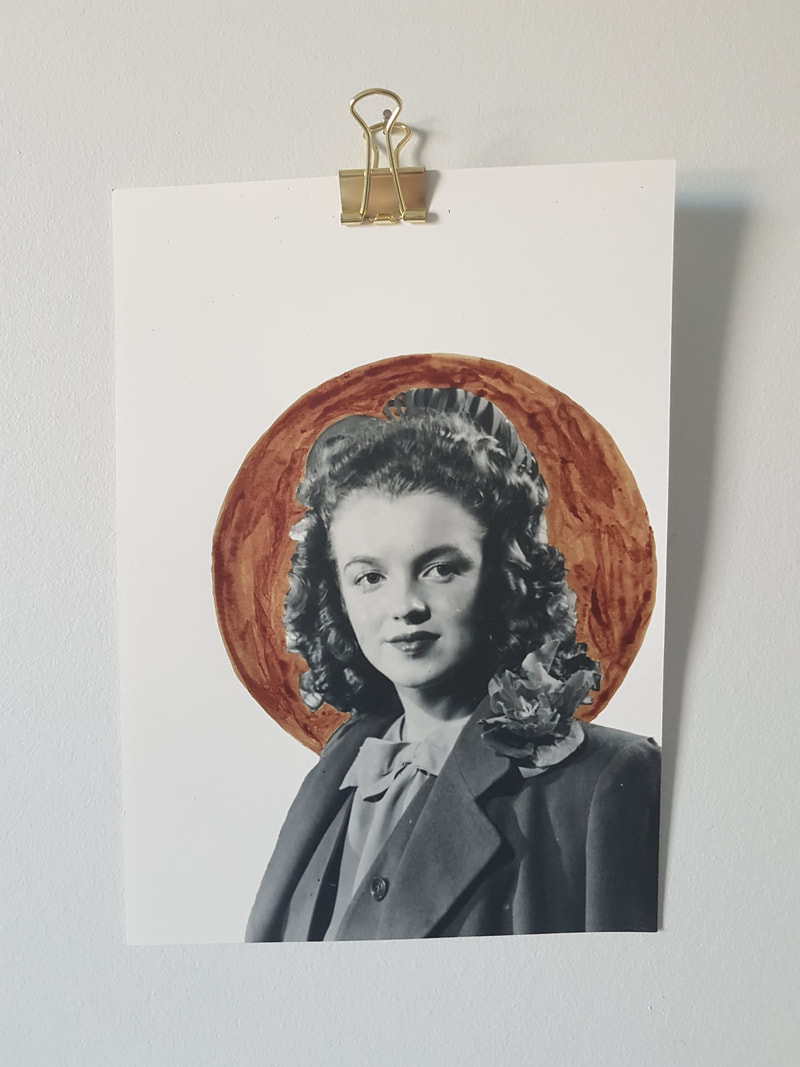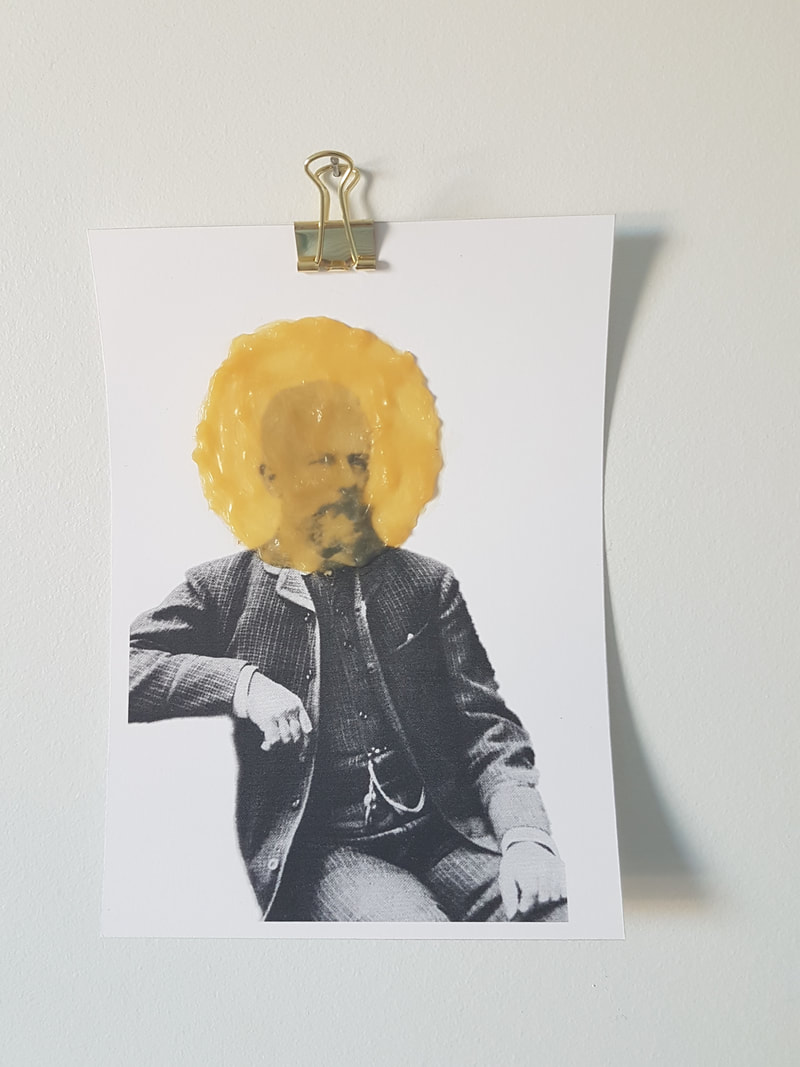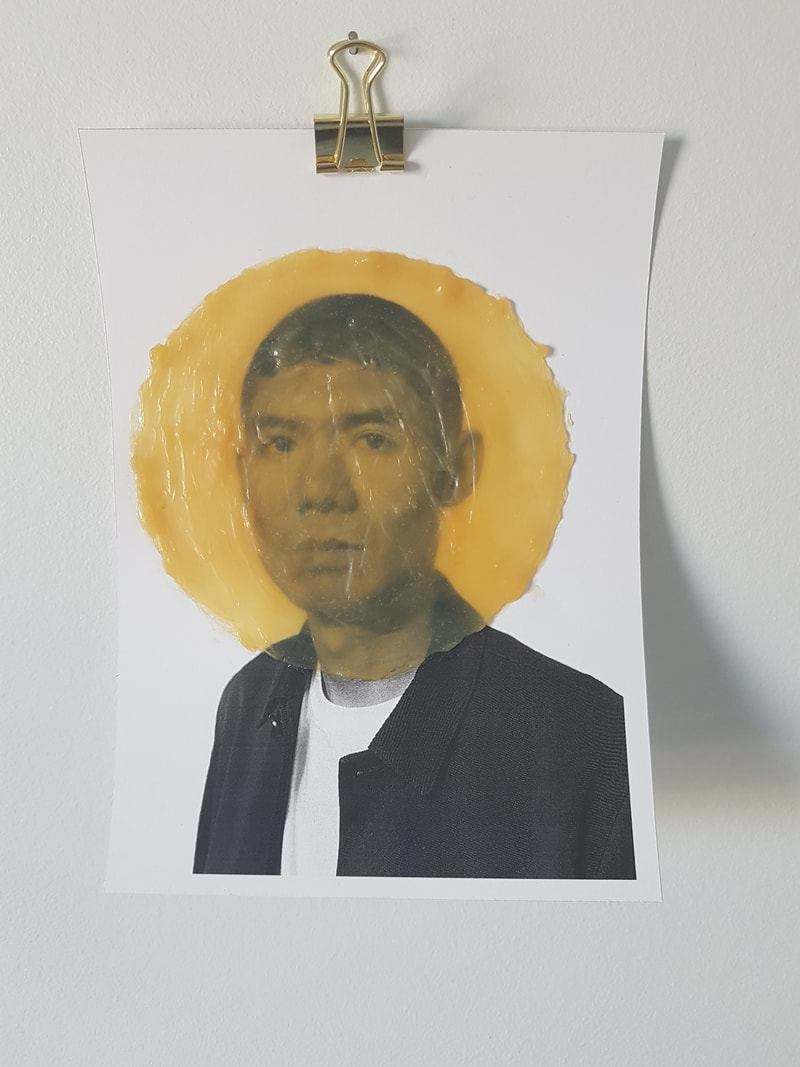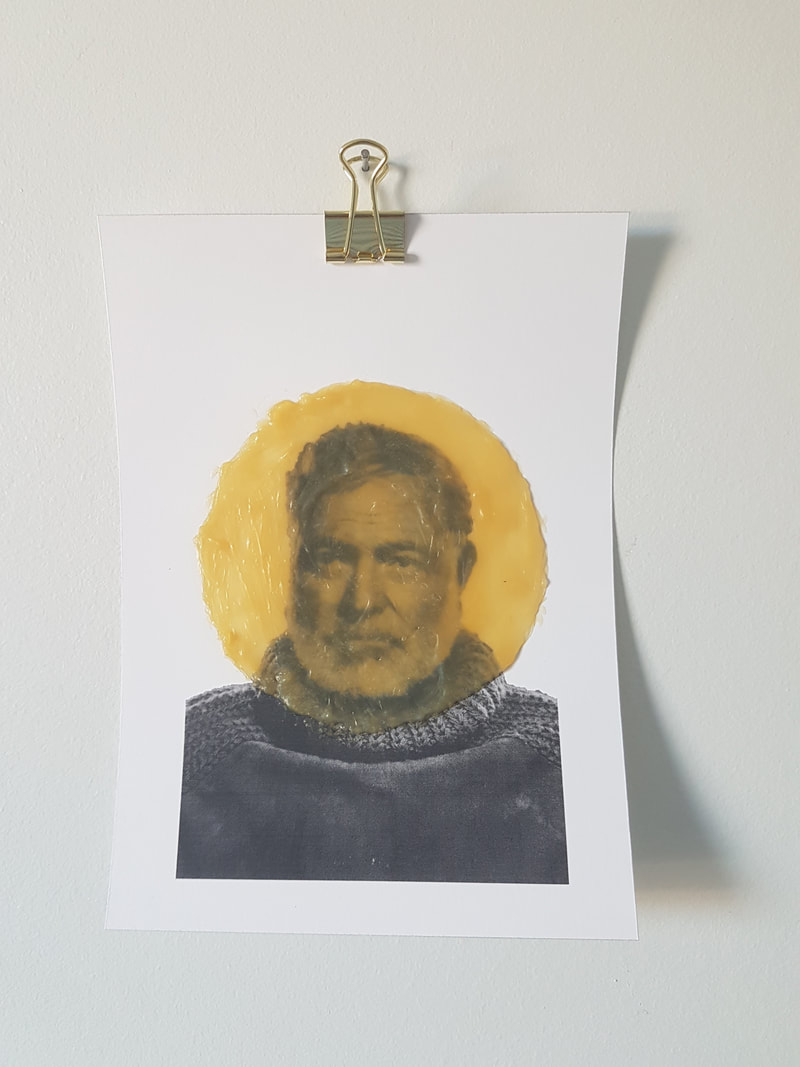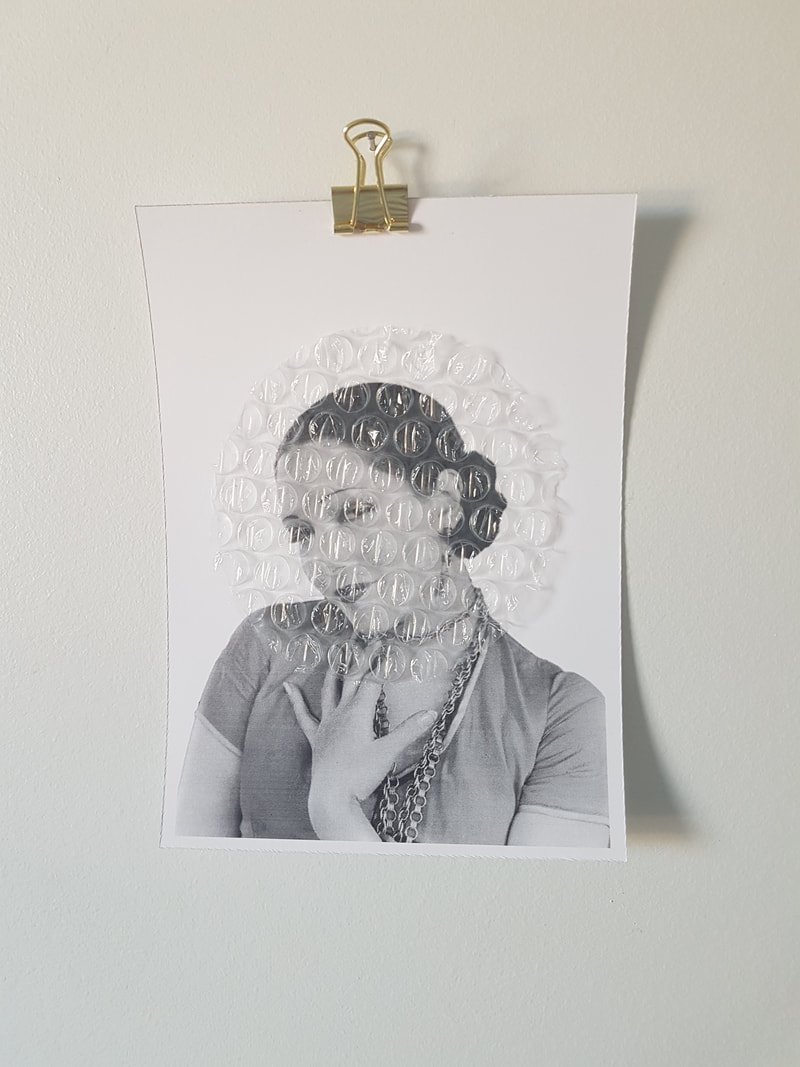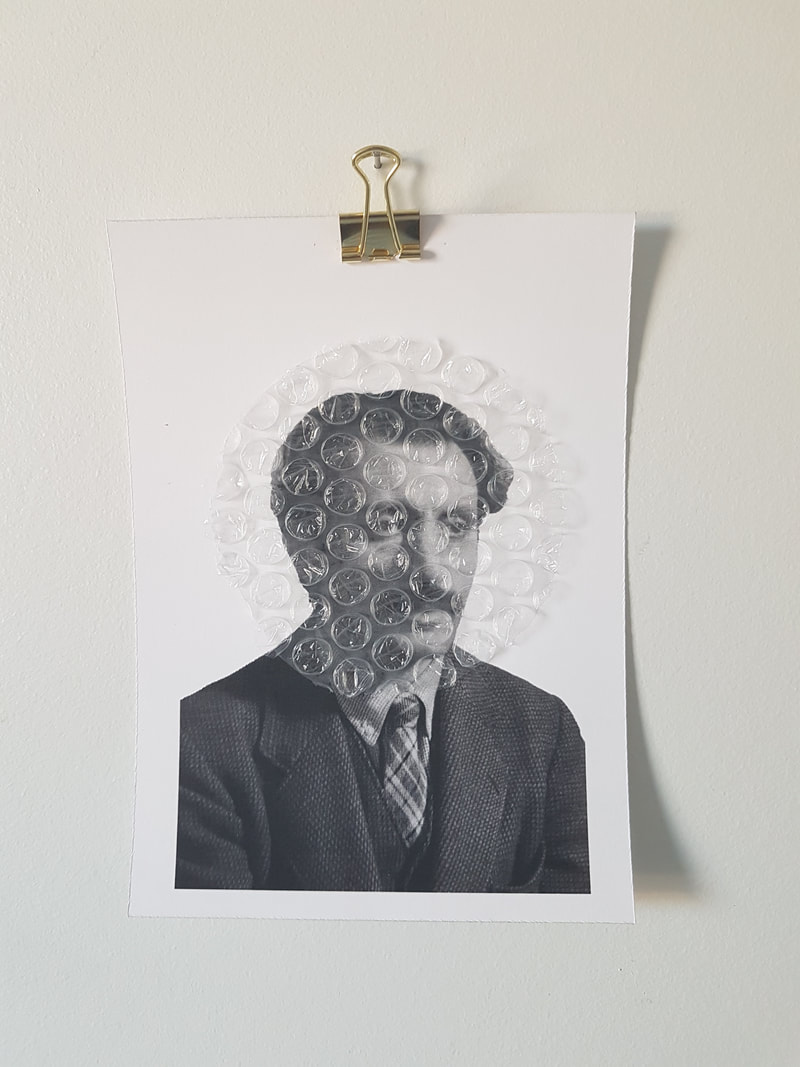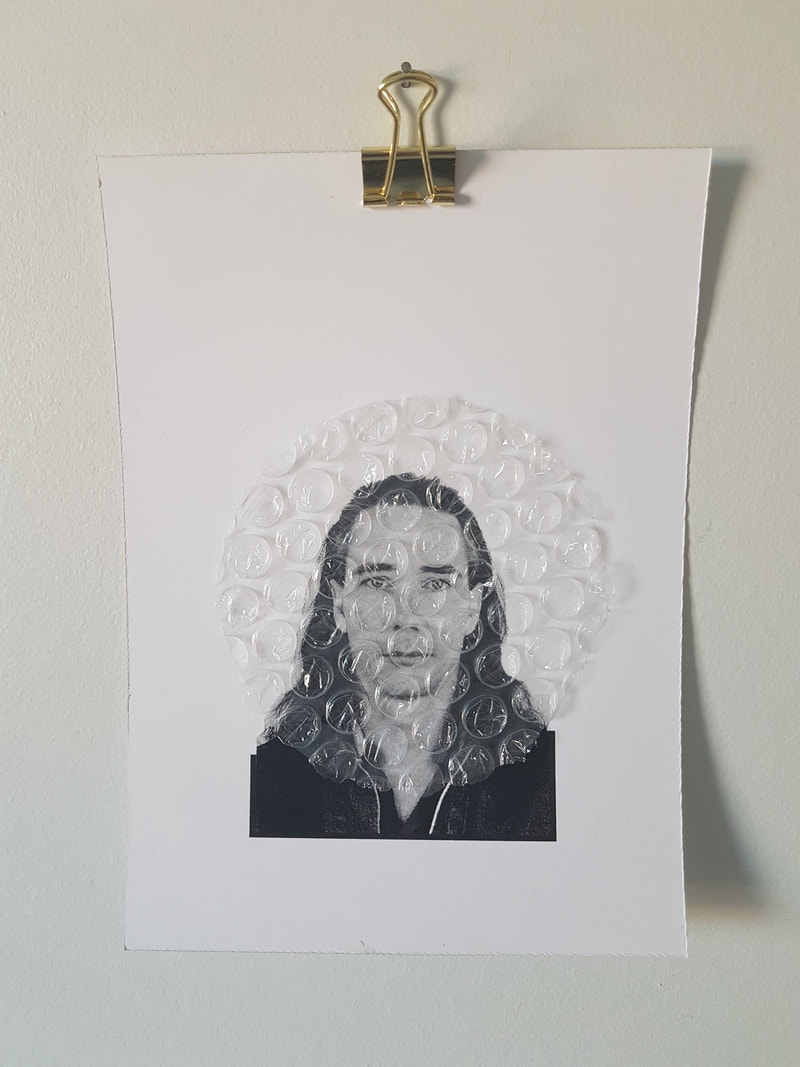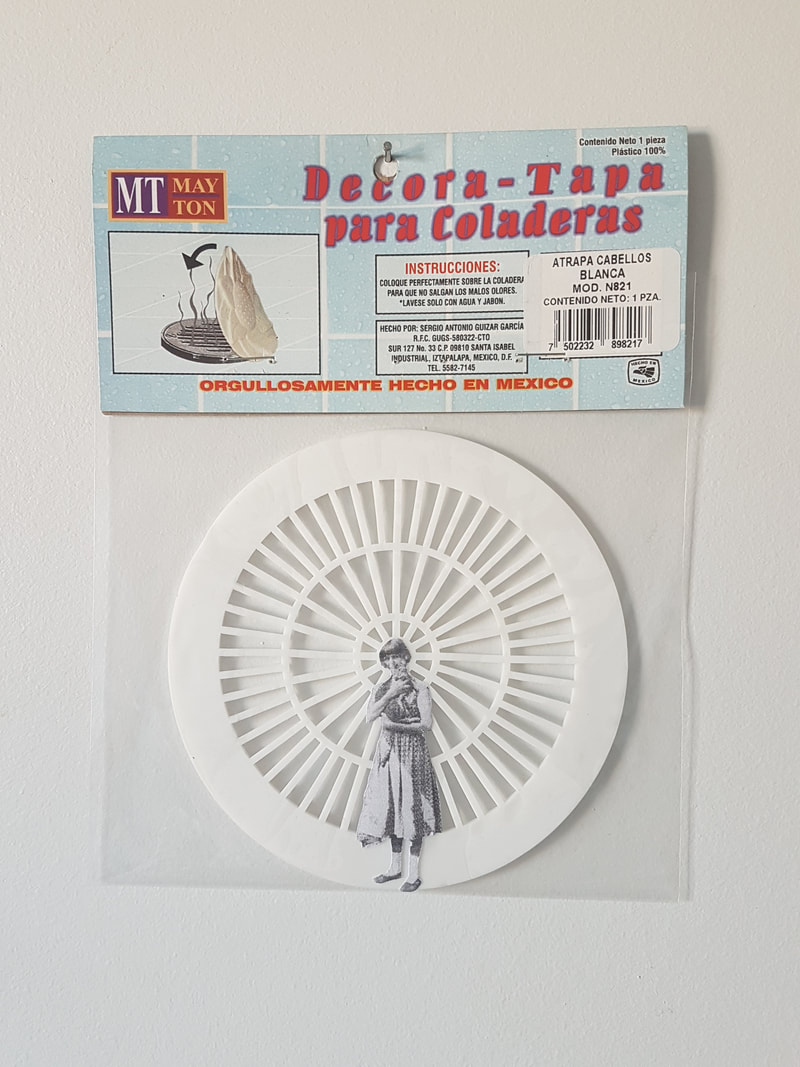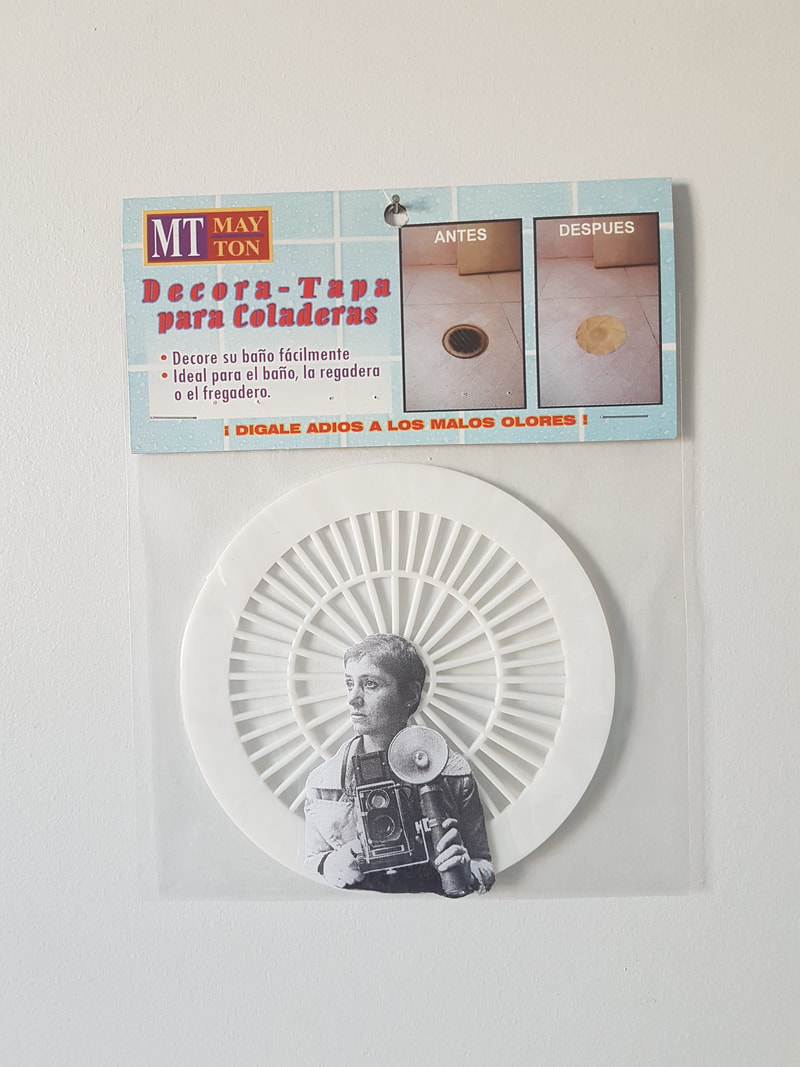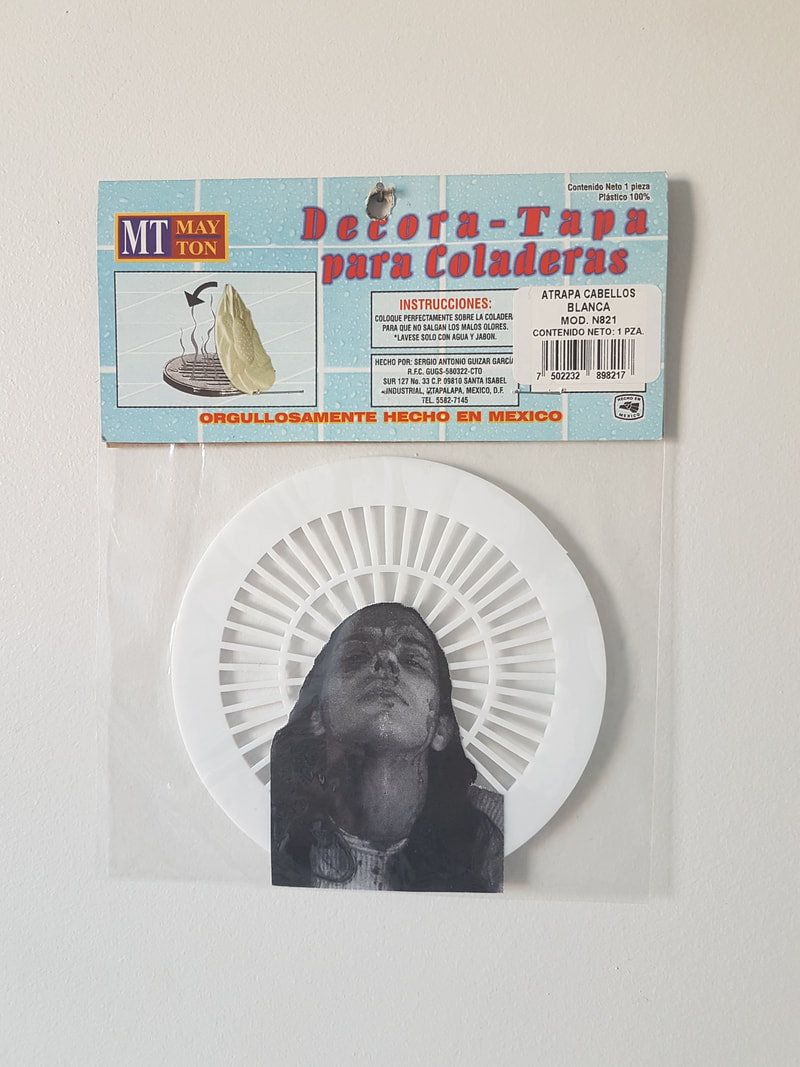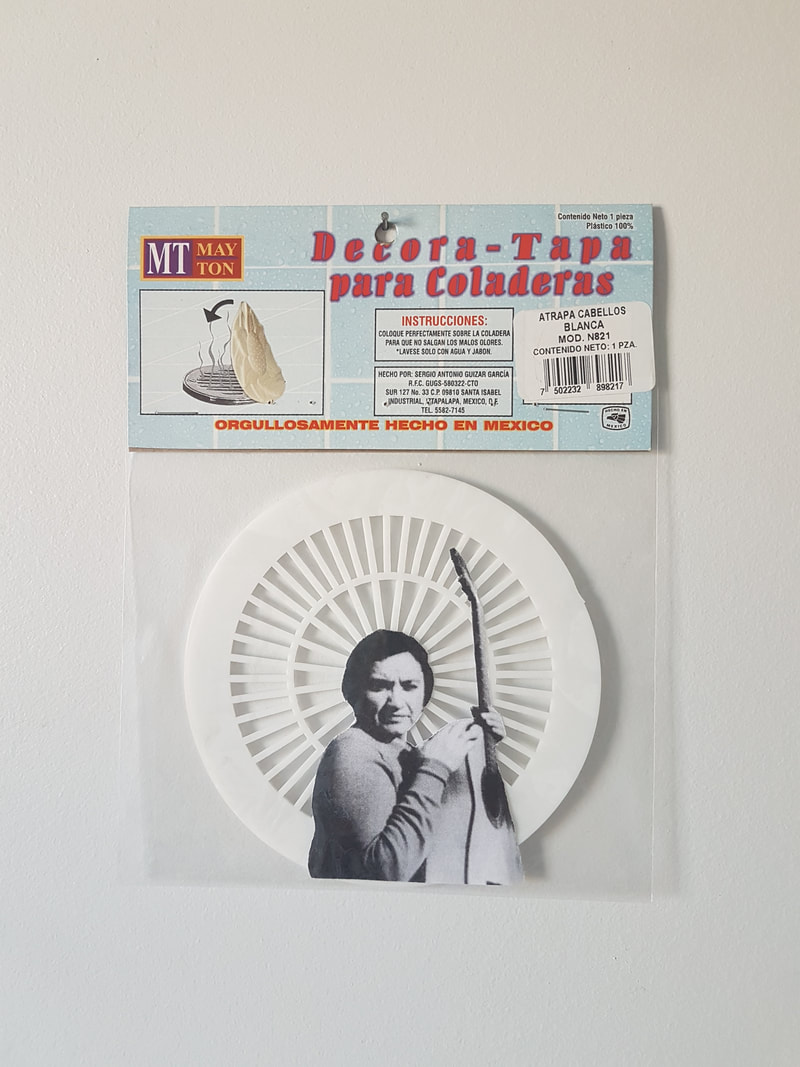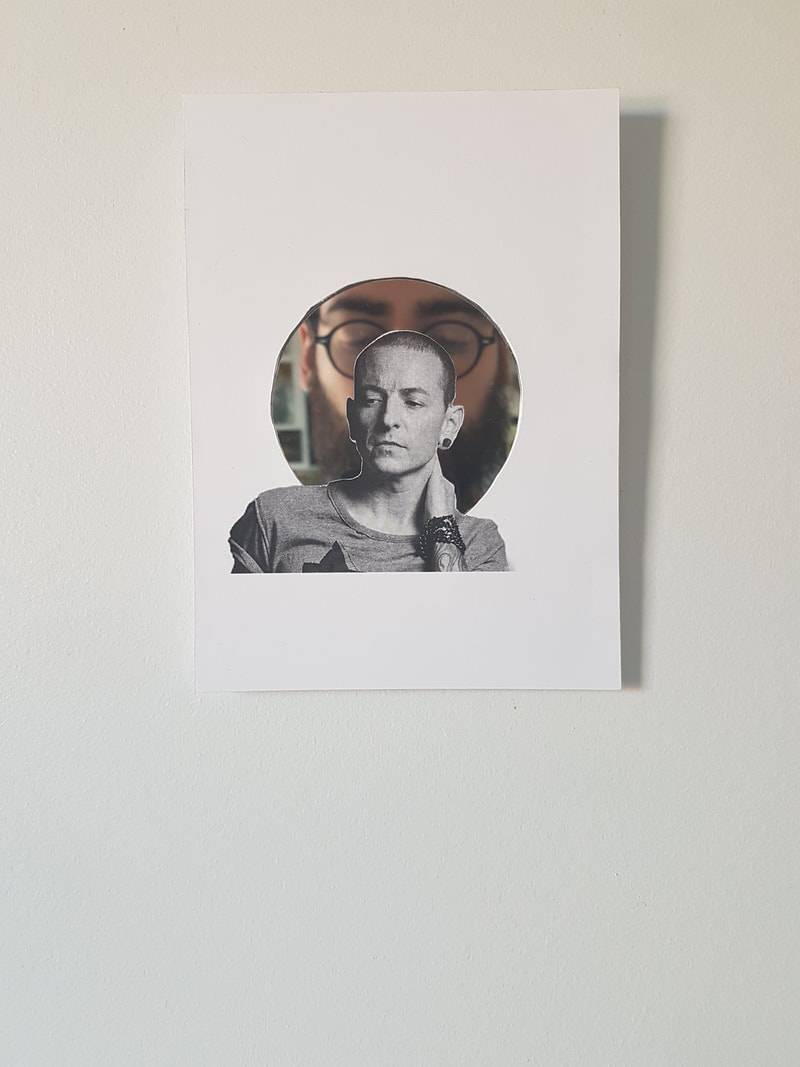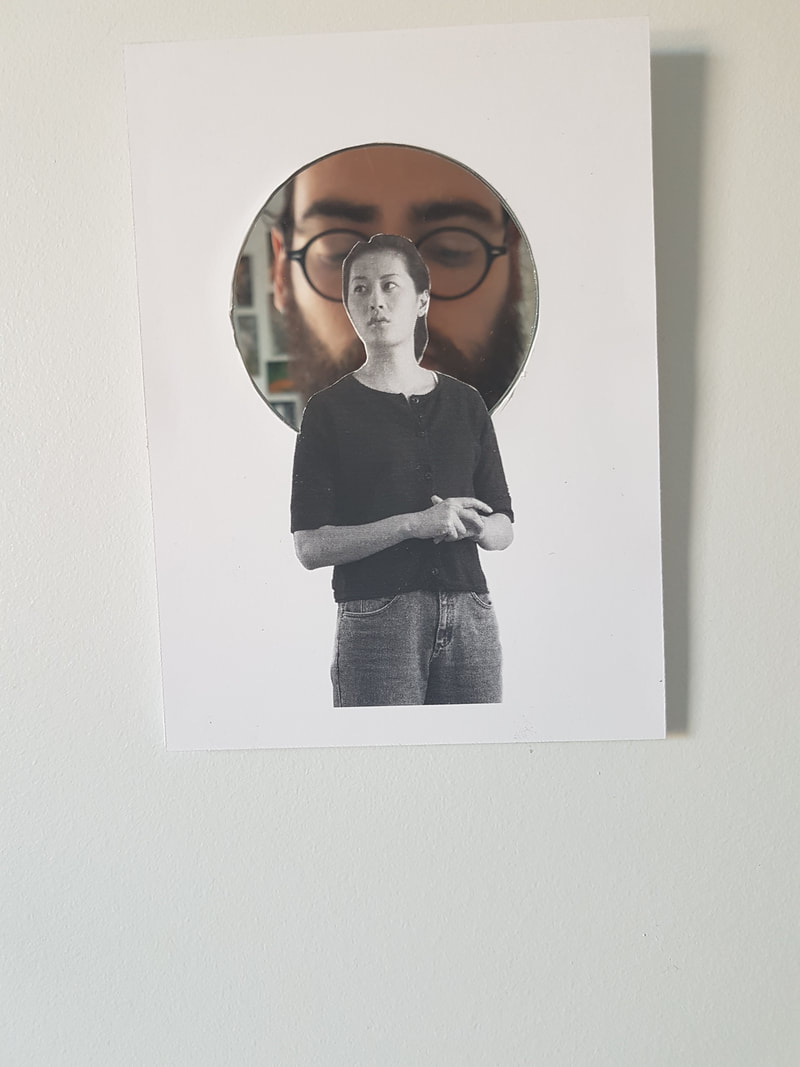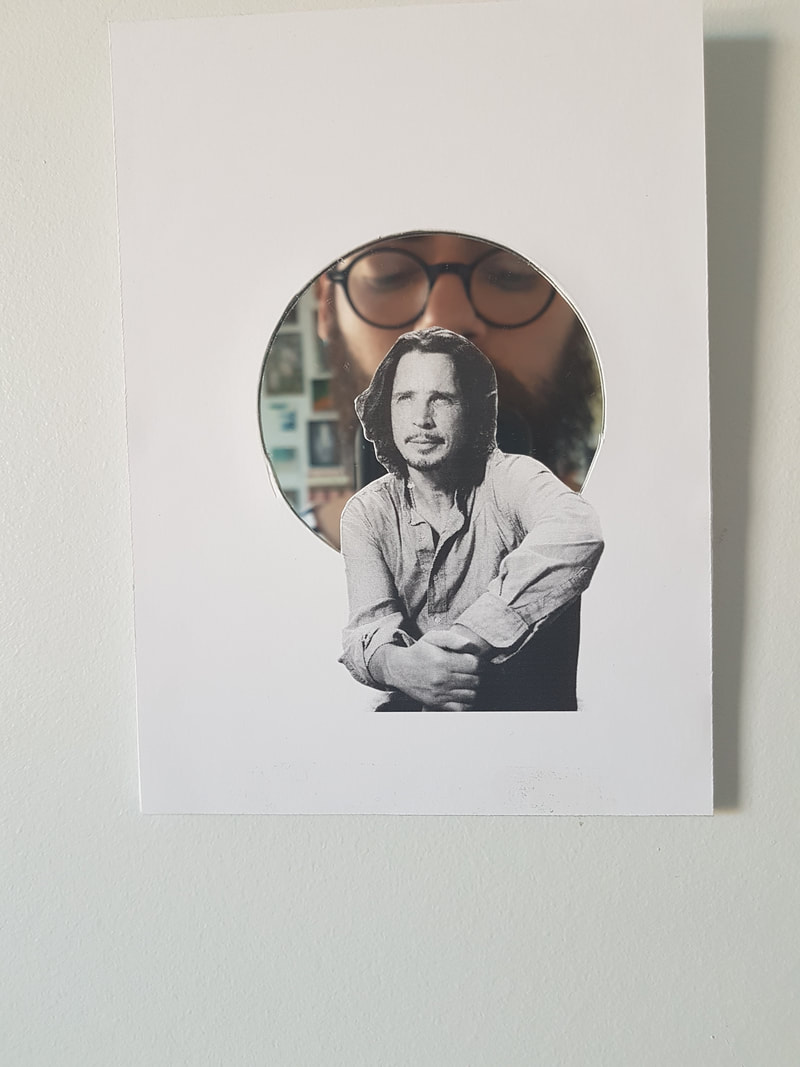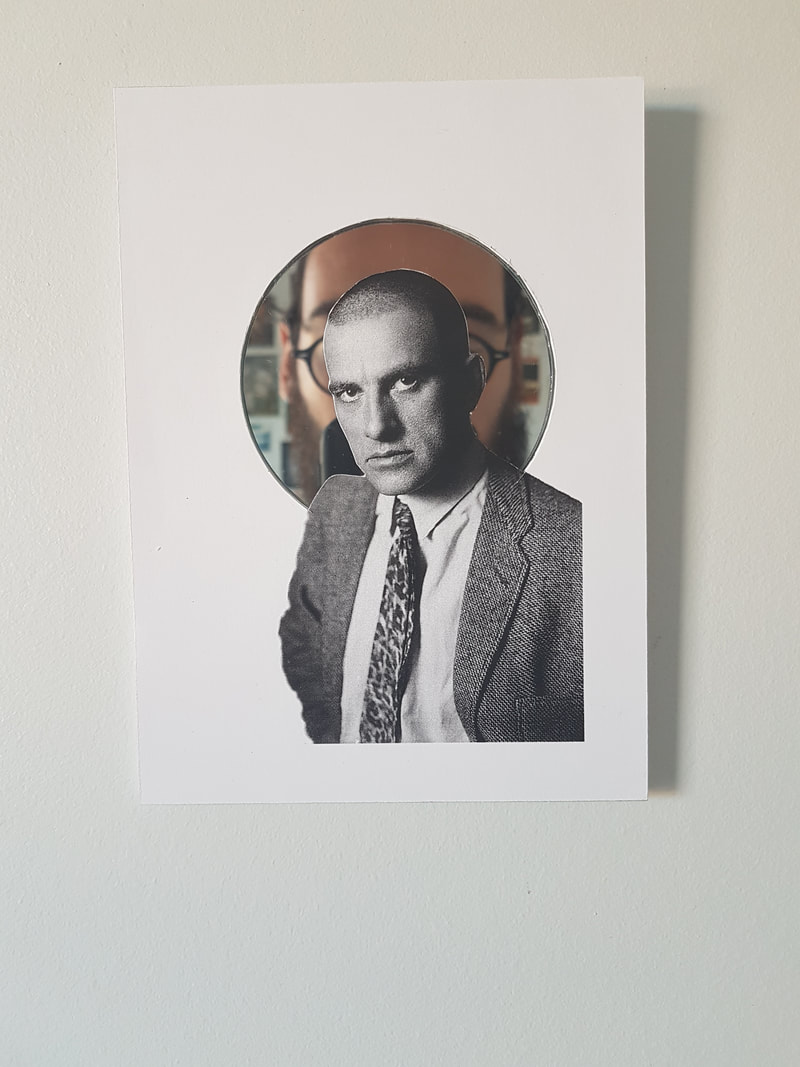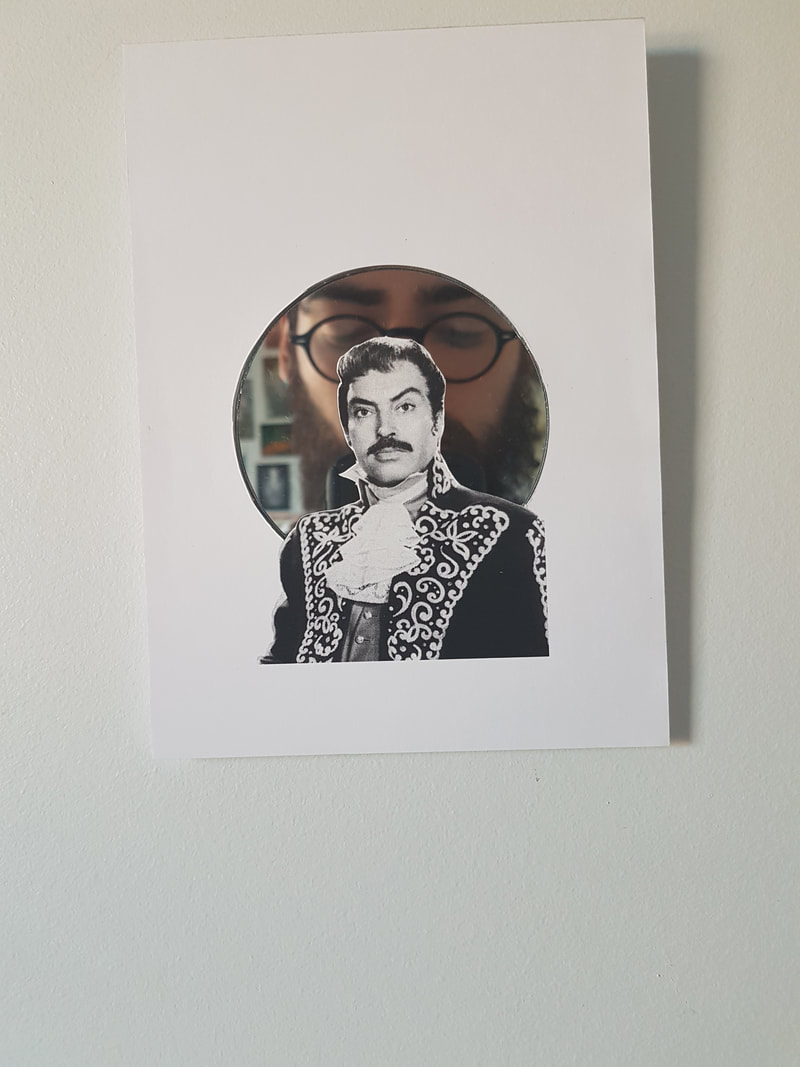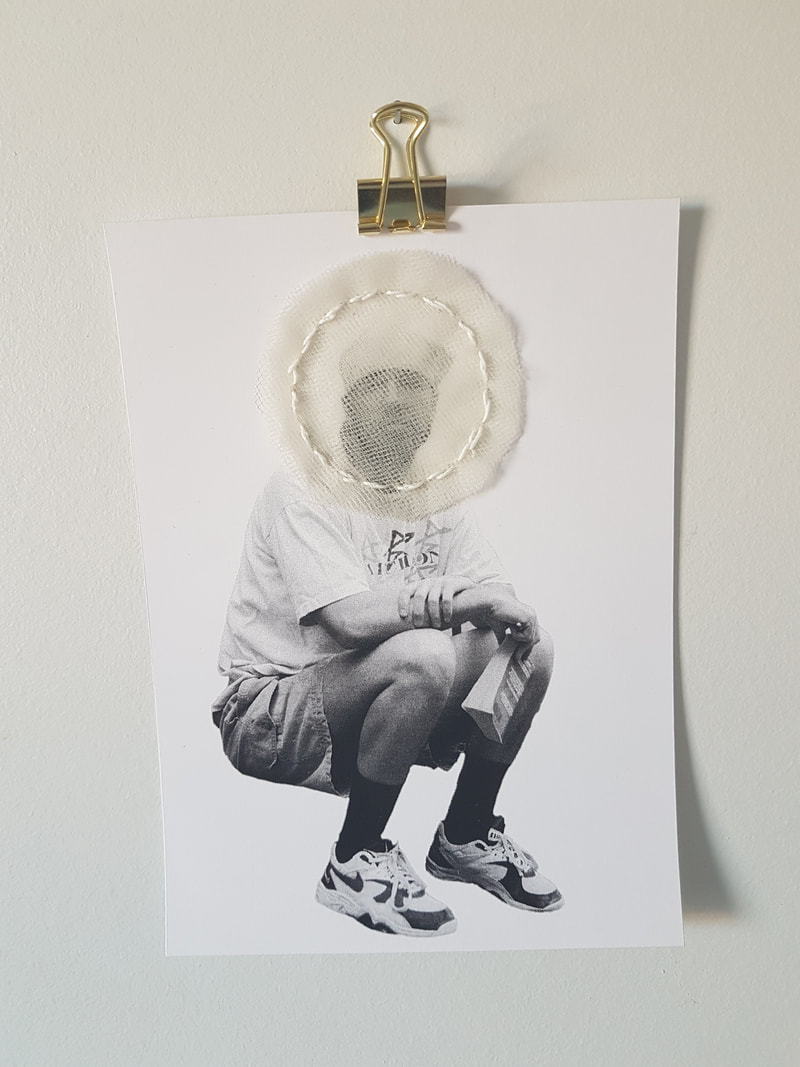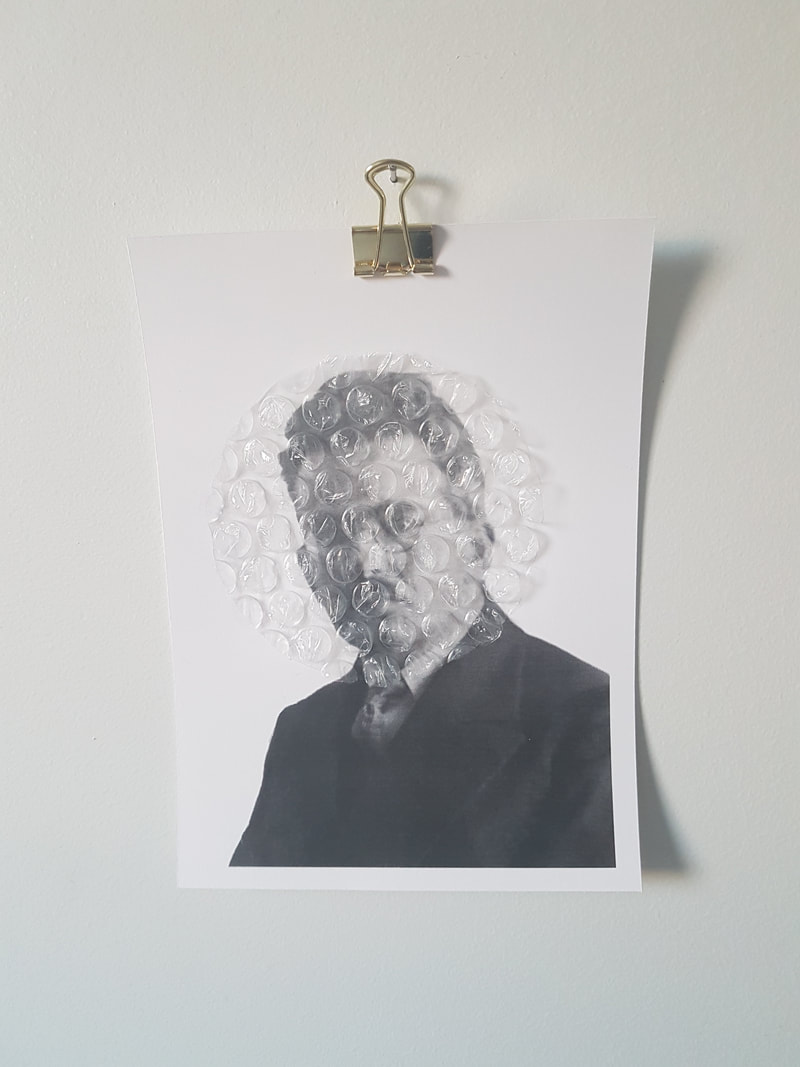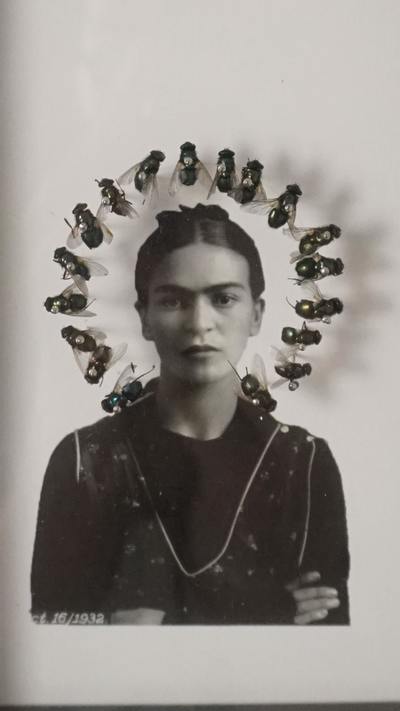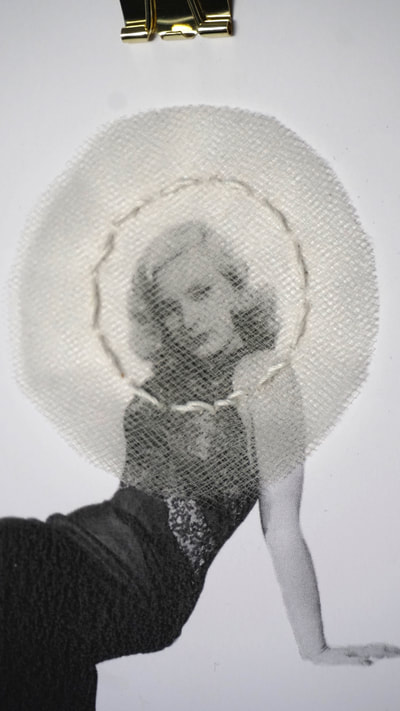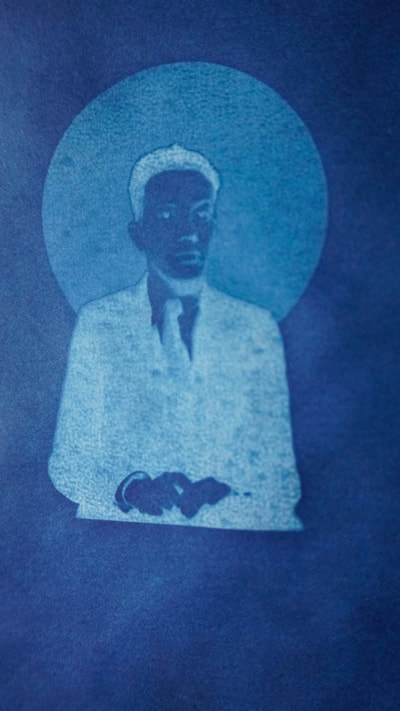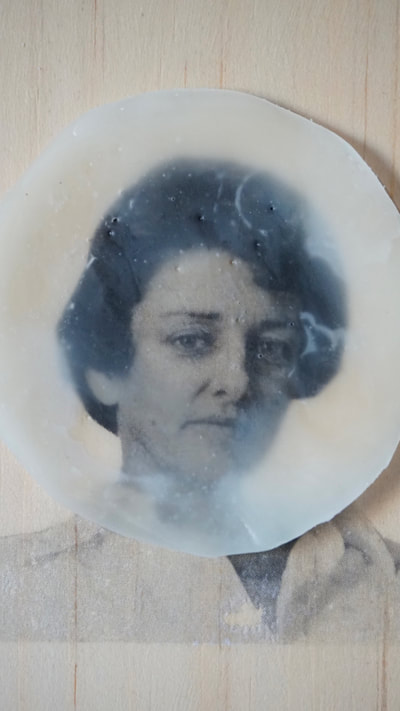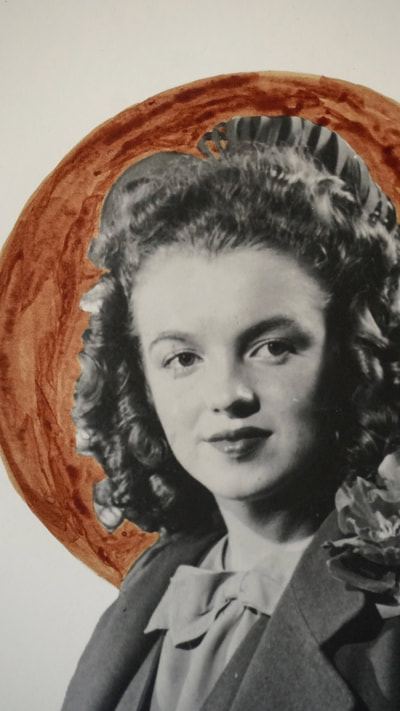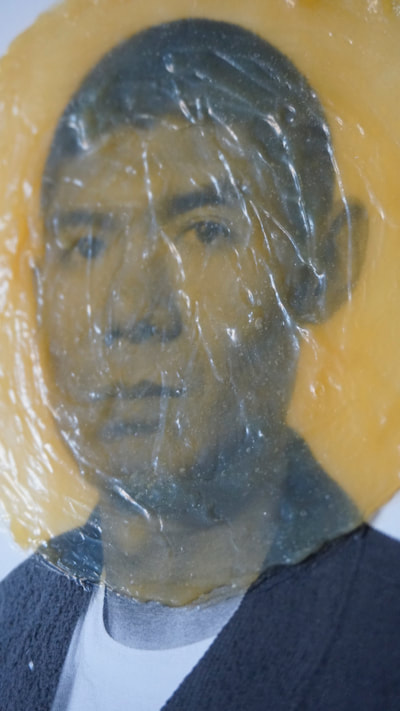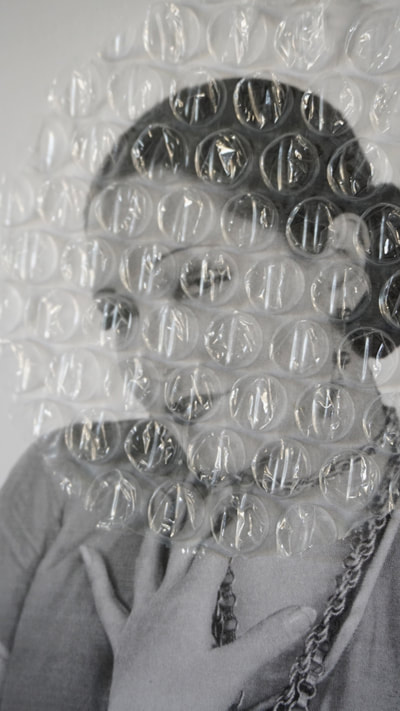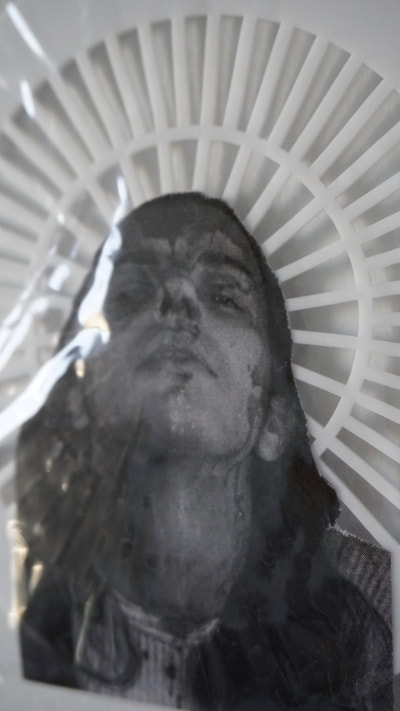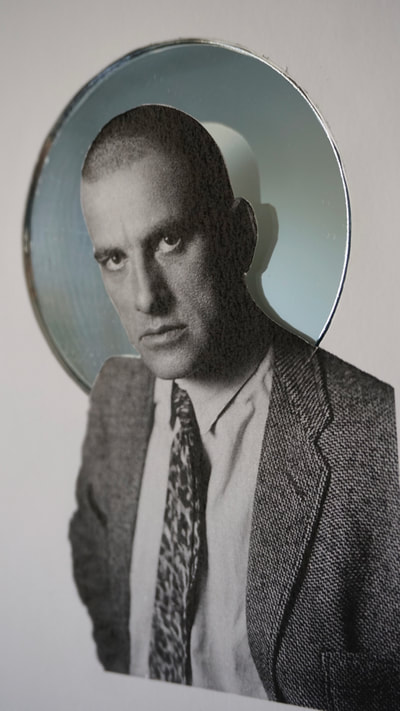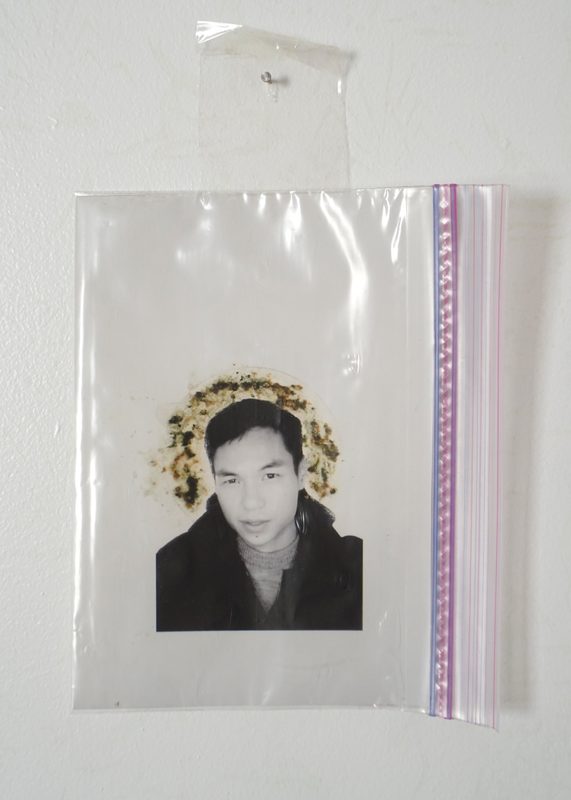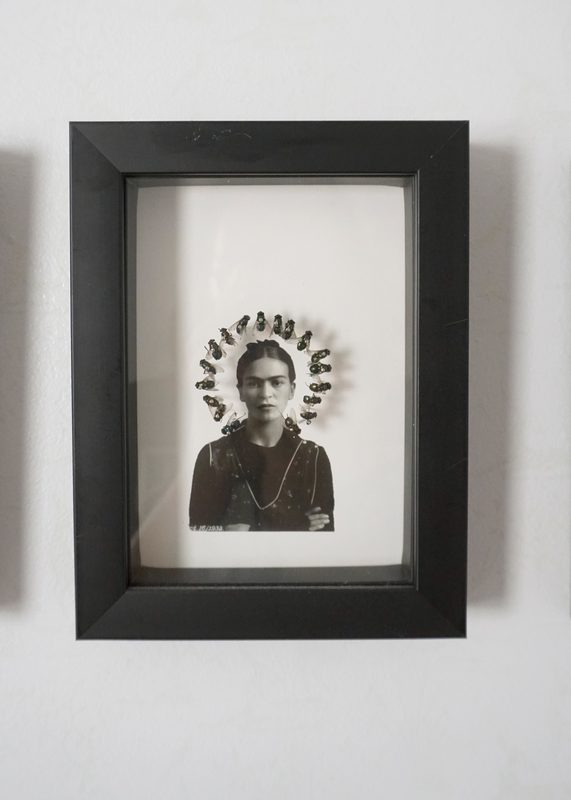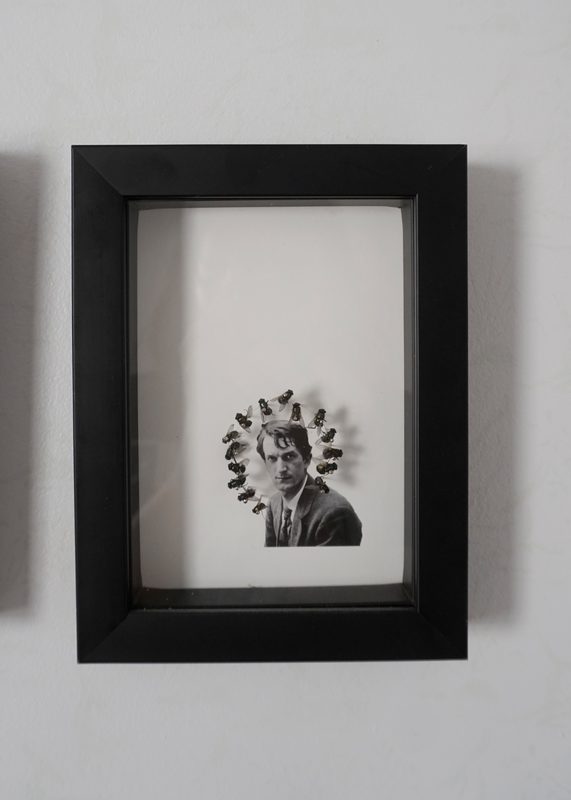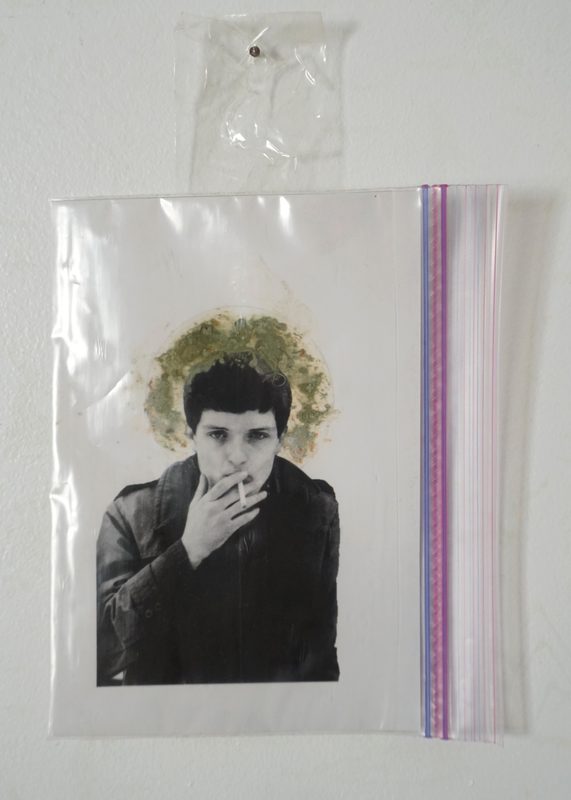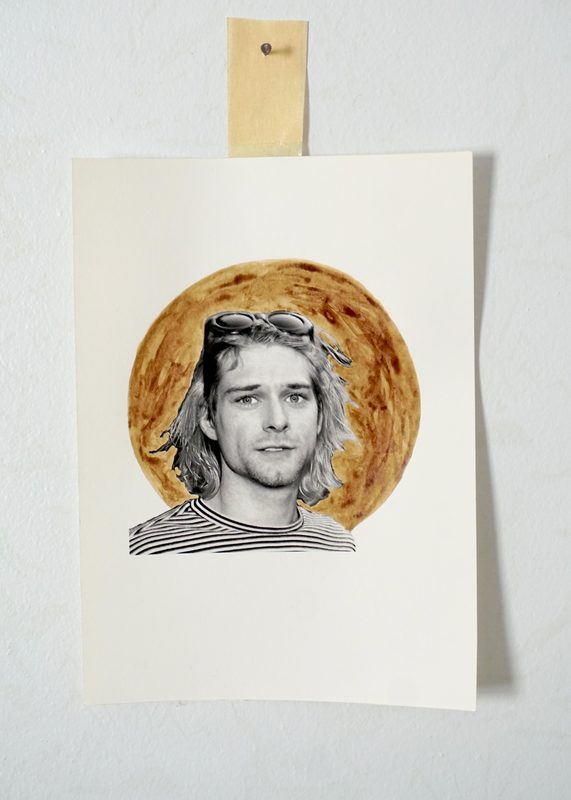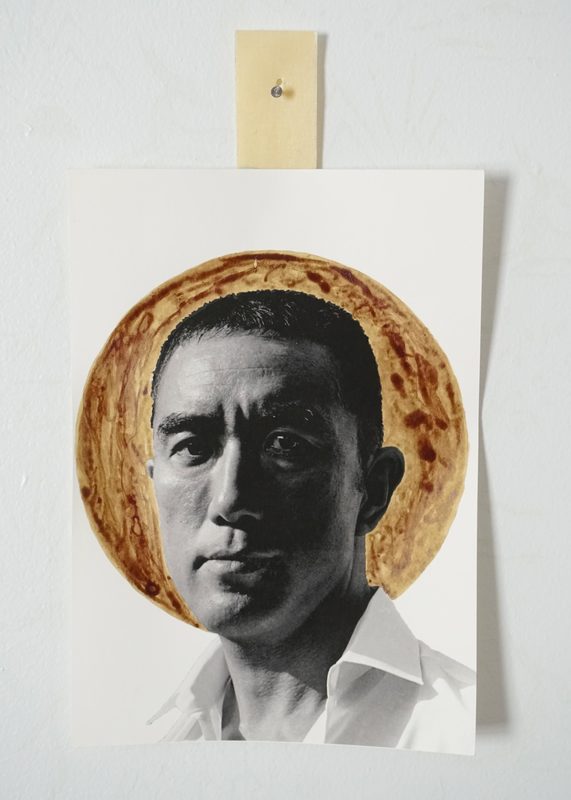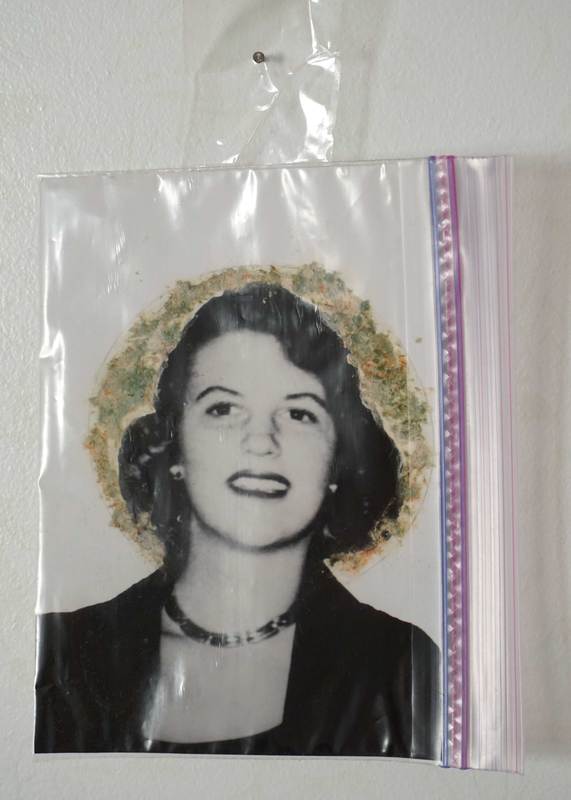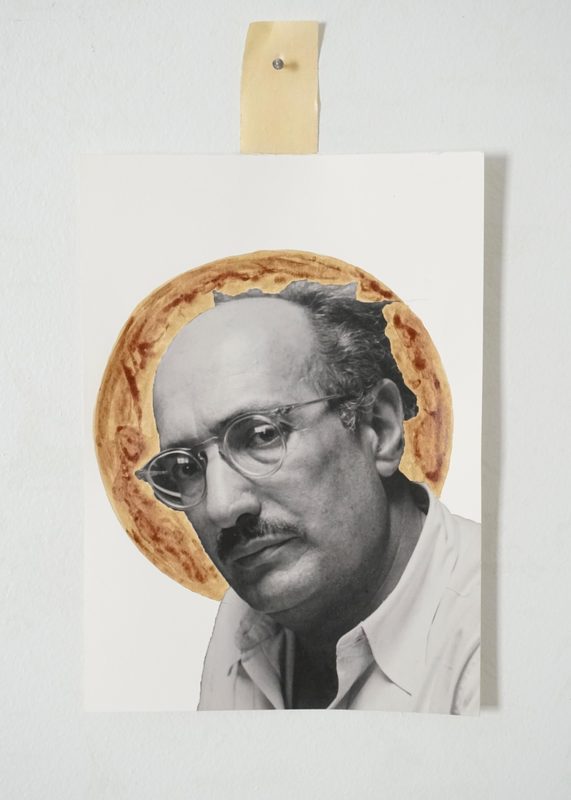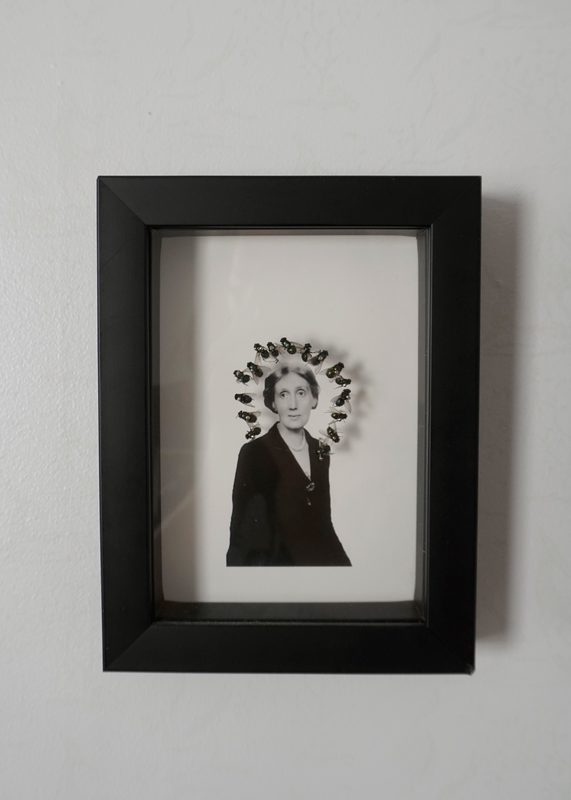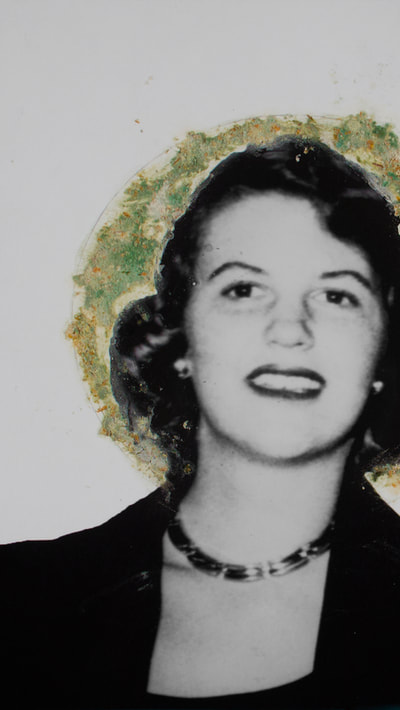La Vida Nunca es Dulce /
Life is Never Kind
La Vida Nunca es Dulce / Life is Never Kind
Mixed Media Photo-Installation, 40 individual pieces, approximately 5x7 inches each (2017).
Materials include:
Pig's Blood, House Flies, Mold, Brass Frames, Brass Clips, Pins, Pine Wood, Beeswax, Resealable Plastic Bags, Bubble Wrap, Veil, Thread, Latex, Mirrors, Drain Covers, Cyanotype Paper and Archival Inkjet Prints.
Declaración de artista: ( English below)
Como seres humanos estamos acostumbrados a crear altares, a conmemorar a nuestros seres queridos que han fallecido. Sin embargo, cuando se trata de personajes famosos cuyo trabajo o imagen forma parte del imaginario colectivo, la conmemoración se vuelve idolatría en la cultura del chisme. Al ser víctimas del espectáculo del sufrimiento, la memoria de estos personajes se ve inevitablemente transformada.
Estos rostros adornados con aureolas reflejan la glorificación que los inmortaliza en la historia. Algunas de estas coronas buscan revelar el carácter visceral de la muerte alejándose del glamour y relacionándolo con la descomposición y el olfato utilizando moho, sangre, cianuro, moscas y tapas. El resto intenta proteger (de manera literal) la imagen de estos famosos con cera, velo, espejos y papel burbuja.
Cada retrato en esta instalación pertenece a una persona que ha muerto por decisión propia, ya sea de manera oficialmente confirmada o altamente sospechada. Estas personas han sido objeto de interés público: son escritores y escritoras, actores y actrices, poetas, músicxs, filósofxs y artistas. Su legado ha sido alterado inevitablemente por este detalle, que ha iluminado o atenuado su memoria y la manera en la cual el público los recuerda.
Artist Statement:
As human beings we are conditioned to create altars to commemorate our loved ones who have passed away. However, when it comes to the death of famous people whose work or image is part of the collective imaginary, the act of commemoration becomes idolatry entwined in the culture of gossip.They become victims in the spectacle of suffering and their memory as well as their legacy is inevitably transformed.
These faces crowned with halos reflect the glorification that has immortalized them in history. Some of these crowns seek to reveal the visceral character of death, steering away from glamour and focusing on some of the aspects of physical decay using mold, blood, cyanide, flies and drain covers.
The rest of the halos attempt to protect (literally in some cases) the image of these celebrities using wax, veil, mirrors and bubble wrap. Each portrait in this installation belongs to a person who has died of his own accord, either documented in official records, or highly presumed by the public. These people have been the object of public interest: they are writers, actors and actresses, poets, musicians, philosophers and artists. Their legacy has been inevitably altered by this detail, which has either enhanced or faded their memory and the way in which the public remembers them.
